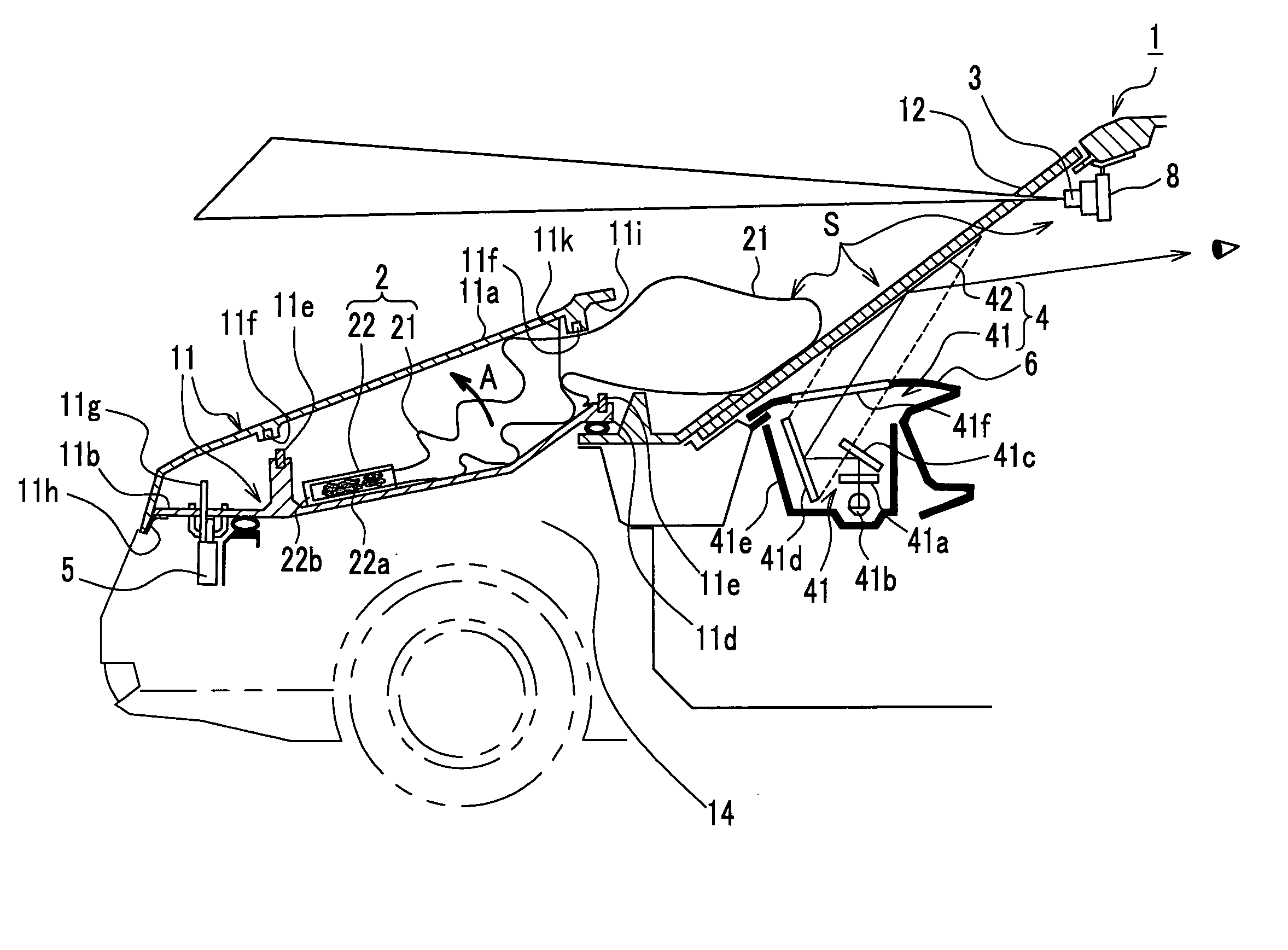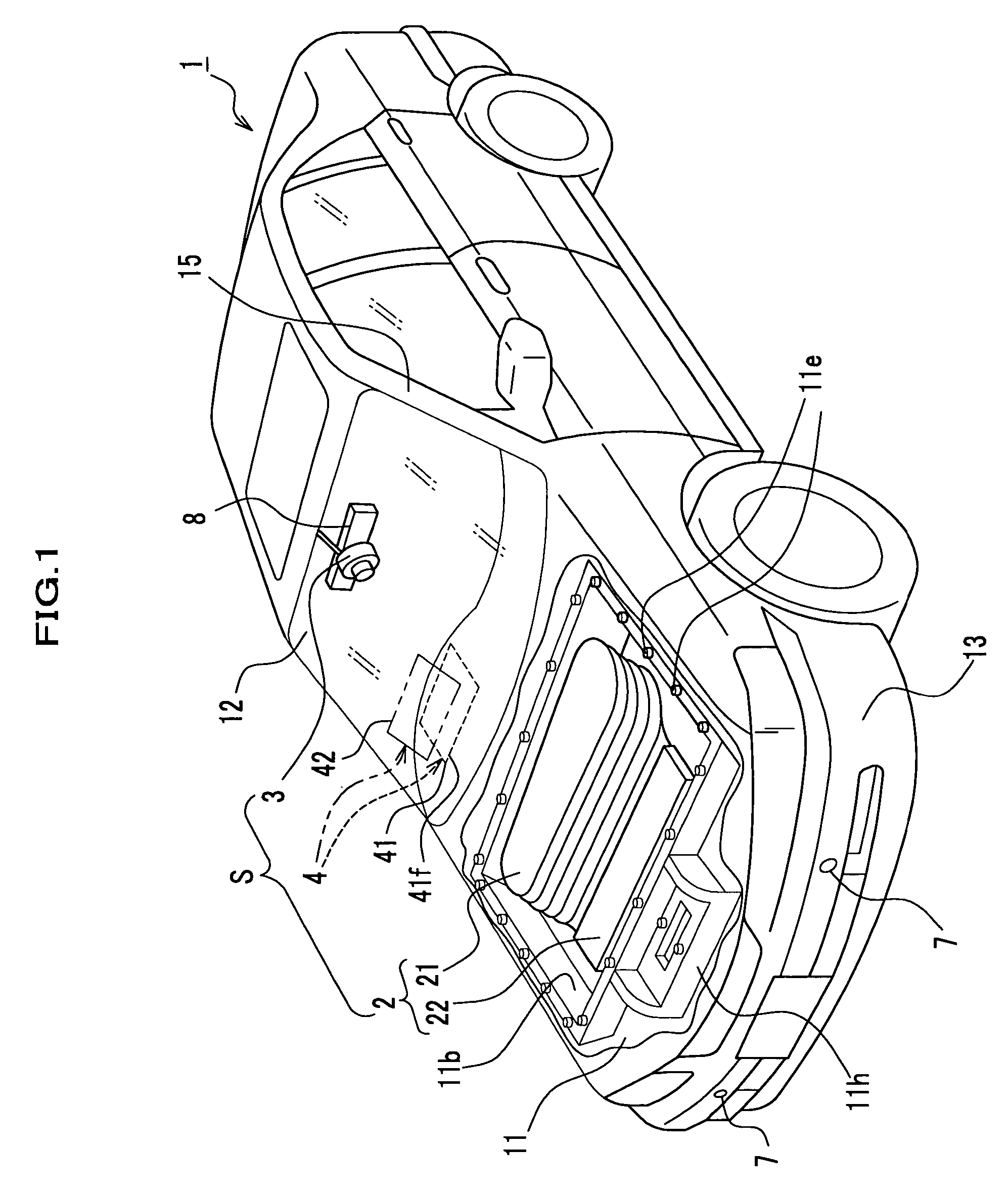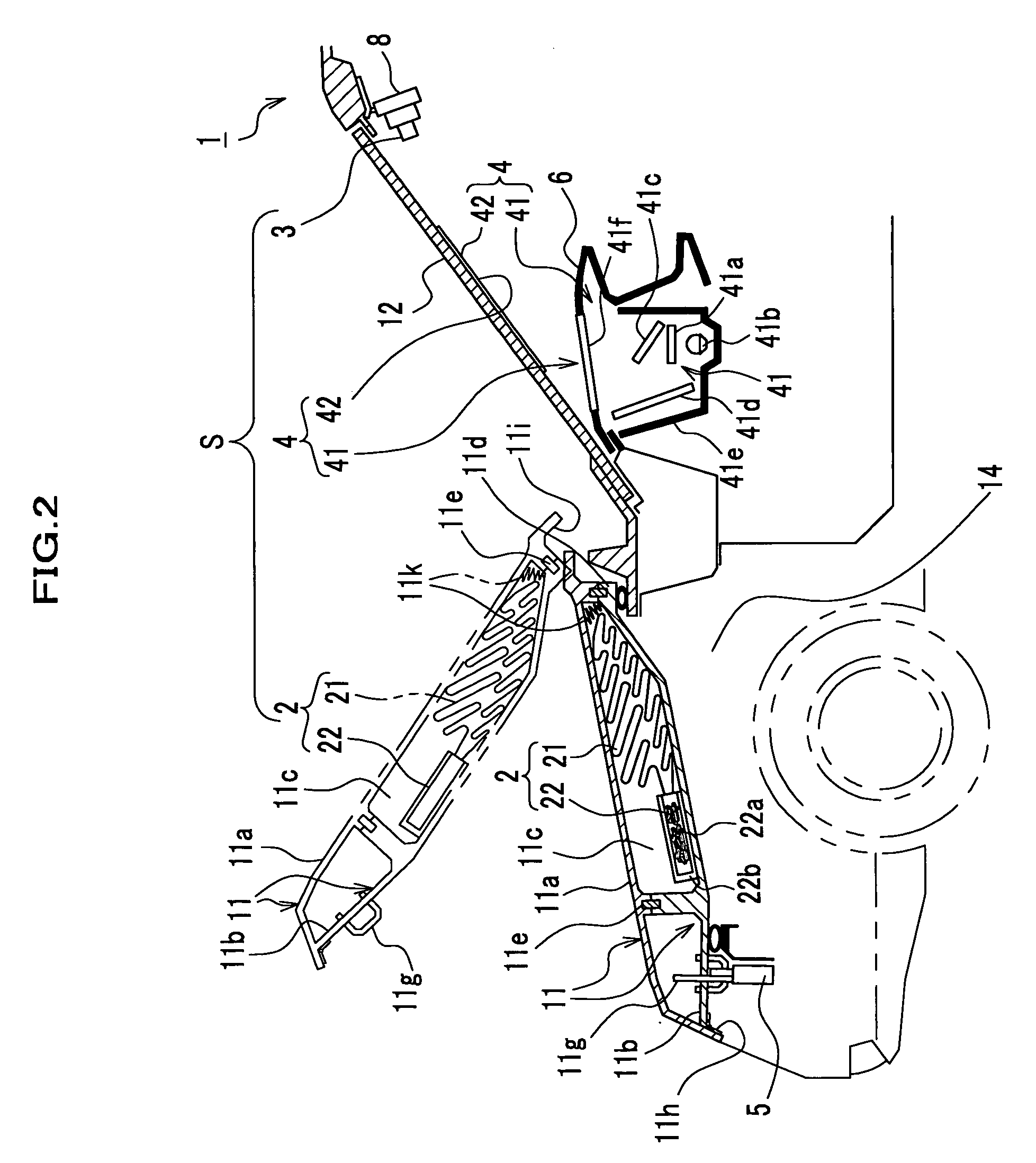Apparatus for a vehicle for protection of a colliding object
a technology for protecting objects and vehicles, applied in vehicular safety arrangments, electric devices, process and machine control, etc., can solve the problems of not being able to provide a sufficient cushion to absorb the impulsive force of pedestrians, not being able to provide a sufficient absorber effect, and not being able to provide a sufficient cushion
- Summary
- Abstract
- Description
- Claims
- Application Information
AI Technical Summary
Benefits of technology
Problems solved by technology
Method used
Image
Examples
first embodiment
a. First Embodiment
[0026]An apparatus for a vehicle for protection of a colliding object according to a first embodiment is described referring to FIGS. 1 through 6C.
[0027]As shown in FIG. 1, an apparatus S for a vehicle for protection of a colliding object (hereinafter referred to as “apparatus S”) includes a pedestrian sensor 7, an air bag unit 2, a camera 3 for taking a forward image of a vehicle and a monitor 4. The pedestrian sensor 7 predicts the potential for a collision by detecting a distance L between a vehicle body 1 and a pedestrian H and the velocity of vehicle 1. Receiving a precautionary signal from the pedestrian sensor 7, the air bag unit 2 deploys an air bag 21. Similarly, receiving the precautionary signal from the pedestrian sensor 7, the monitor 4 displays the image taken by the camera 3. The apparatus S deploys the air bag 21 on either a hood 11 of the vehicle or the outside of a windshield 12 when the pedestrian sensor 7 predicts the potential for the collisio...
second embodiment
b. Second Embodiment
[0073]A second embodiment of the present invention is described referring to FIG. 7. FIG. 7 is a perspective view showing the installation of cameras according to the present invention.
[0074]In the second embodiment, cameras 3 according to the first embodiment are mounted to a side mirror 16 such as a door mirror or a fender mirror, a roof top 17 and a front grille 18.
[0075]A camera 31 is mounted to the forward surface of the side mirror 16 disposed on the right or left side of a vehicle body 1 so that it can take a forward image of a vehicle.
[0076]A camera 32 is mounted to the roof top 17 so that it can take a forward image of the vehicle.
[0077]A camera 33 is mounted to the front grille 18 disposed at the forward portion of an engine room (not shown) so that it can take a forward image of the vehicle.
[0078]The locations of cameras 31, 32 and 33 are selected so that they can always take the forward images even if the air bag 21 and the hood 11 operate and block t...
third embodiment
c. Third Embodiment
[0079]A third embodiment of the present invention is described referring to FIGS. 8 and 9.
[0080]In the third embodiment, an apparatus S according to the first embodiment judges if a pedestrian H is going to collide with a vehicle according to a signal delivered by a camera 3 according to the first embodiment.
[0081]FIG. 8 is a block diagram showing an apparatus according to the present invention.
[0082]As shown in FIG. 8, the apparatus S includes the camera 3 to take a forward image of a vehicle, an electronic control unit 9, a velocity sensor 10, a monitor 4 including a head-up display unit 41 and an air bag unit 2 including an inflator 22.
[0083]The camera 3, which is the same as that of the first embodiment and the cameras 31, 32 and 33 of the second embodiment, is electrically connected to a distance calculator 921.
[0084]The electronic control unit 9, which is made of, for example a CPU, a ROM and a RAM, has a memory 91 and an image processor 92.
[0085]The memory ...
PUM
 Login to View More
Login to View More Abstract
Description
Claims
Application Information
 Login to View More
Login to View More - R&D
- Intellectual Property
- Life Sciences
- Materials
- Tech Scout
- Unparalleled Data Quality
- Higher Quality Content
- 60% Fewer Hallucinations
Browse by: Latest US Patents, China's latest patents, Technical Efficacy Thesaurus, Application Domain, Technology Topic, Popular Technical Reports.
© 2025 PatSnap. All rights reserved.Legal|Privacy policy|Modern Slavery Act Transparency Statement|Sitemap|About US| Contact US: help@patsnap.com



